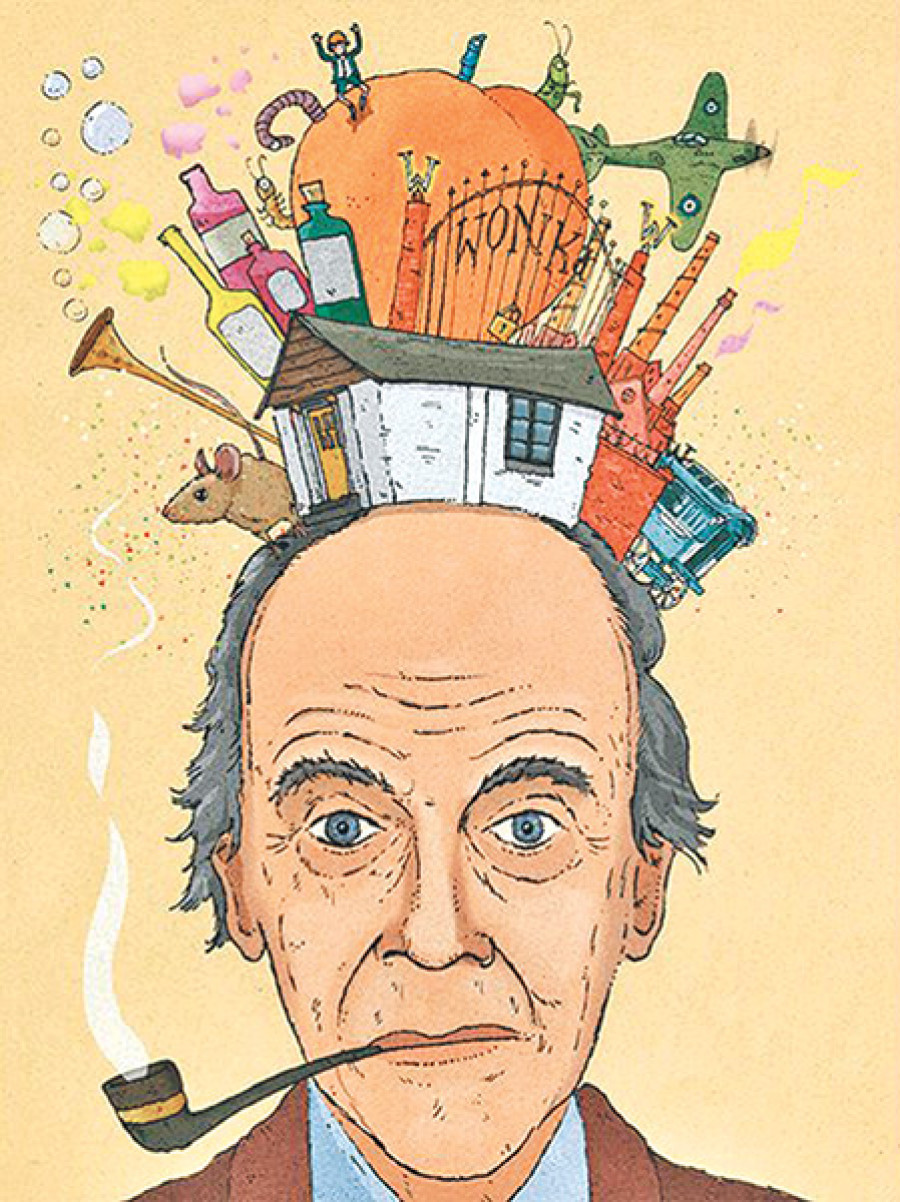Entertainment
Roald Dahl for Children and for Adults
Roald Dahl is most famous for his children’s books, including the now classics Charlie and the Chocolate Factory, The BFG, and The Witches. His books have gripping plots, relatable heroes, and outlandish metaphors.
Vishad Raj Onta
Roald Dahl is most famous for his children’s books, including the now classics Charlie and the Chocolate Factory, The BFG, and The Witches. His books have gripping plots, relatable heroes, and outlandish metaphors. Though unquestionably spellbinding, Dahl’s works, even those for children, always have a morbid air about them. For example, The Witches is about bald women who prey on children; The Twits is about a twisted couple who train monkeys in a cage and hunt birds using glue. The illustrations in his books, made by Quentin Blake, are eccentric, instantly recognisable, and complement the stories perfectly. They are at first glance like doodles, but a closer look reveals that they are quite detailed and complex.
I started reading Roald Dahl at a pretty young age. I was about seven years old when my dad and I bought a large collection of his children’s stories from a bookstore in Kathmandu. I have read and reread those stories many times, and they do not get old. Now, I am exploring his short stories, and while they are hard to find in print, they are readily available online. I am discovering that Dahl’s short stories are certainly worth a read, both for analytical purposes and just for enjoyment.
Dahl is brilliant at short stories that operate at a more adult level. His short stories were originally published in different collections, but I first encountered them in a volume compiled for teenagers, The Great Automatic Grammatizator (2004). His short stories are where Dahl`s immense imagination is put on show. He has the ability to dream up absurd, disturbing scenarios, and stretch them to the borders of normality. In the end they are both pleasing and compelling: Pleasing as in he makes the endings to the stories so unpredictable, yet so perfect. Once the reader knows the ending, and rereads the story, the subtle hints at the ending and the foreshadowing become evident, adding to the compelling storytelling genius of Dahl.
Take for example, the short story Parson’s Pleasure included in the above-mentioned volume. It is the story of a man who has made a business out of going to people’s houses pretending to be a parson, all the while looking for old, valuable furniture, and swindling them from unsuspecting households through various methods. He has done this so many times that he seems to run on autopilot: He knows exactly what to say and how to act. At one house he sees a particularly rare set of drawers, and tells the owners he would like them for the wood. However, the owners are not stupid either, and they figure, if he just wants the wood, they might as well chop up the drawers for him. The charm in this story is that Dahl does not reveal the parson’s reaction to this action, and leaves readers to imagine for themselves what happens next. The reader is left with a satisfying mixture of feelings: Disappointment at the parson’s failure, but satisfaction as you know that justice has been done, although in a surprising way.
Dahl also has a feel for the horrific. One example of this is Royal Jelly also included in the same collection. This is a story of a beekeeper who feeds his malnourished baby royal jelly, something bee larvae feed on to become queen bees. While the baby does get fatter, she looks more and more like a bee, and Dahl describes this in riveting, horrifying detail: “The baby was lying naked on the table, fat and white and comatose..”. He then ends the story with the baby’s father telling her mother, “We don`t want our little queen to catch a cold.”
Dahl’s short stories are sometimes dark and off-colour, and he seems quite fascinated with the morbid and ugly. In fact, he has been called an “unpleasant man” who wrote “macabre stories” by some of his critics. He has several blasphemous stories, and he also occasionally includes tabooed sexual topics (such as prostitution and wife-swapping) in them. Hence most of his short stories are suitable only for adult readers.
However, his children’s books are invaluable resources, for behind those gripping stories and engaging illustrations are important messages, for both children and parents. Take Charlie and the Chocolate Factory as an example. Charlie is living in abject poverty with all his parents and his grandparents, yet he is most happy with what he has, and is very gracious when he finds the golden ticket to enter the chocolate factory. In The BFG, Dahl tells of a giant who faces discrimination and bullying for being different than all the other giants. And, Danny the Champion of the World is the story of a boy who absolutely adores his father who in turn teaches his son how to survive in this world. All of these are relevant messages for children.
If not for the messages, children and not-so-grown-ups should read Roald Dahl purely for the laughs, for the pranks, and for the absurd characters he dreams up. As he puts it in his book Matilda, “Children are not as serious as grown-ups and they love to laugh.”
Onta is an A-level student at Rato Bangala School




 11.12°C Kathmandu
11.12°C Kathmandu










